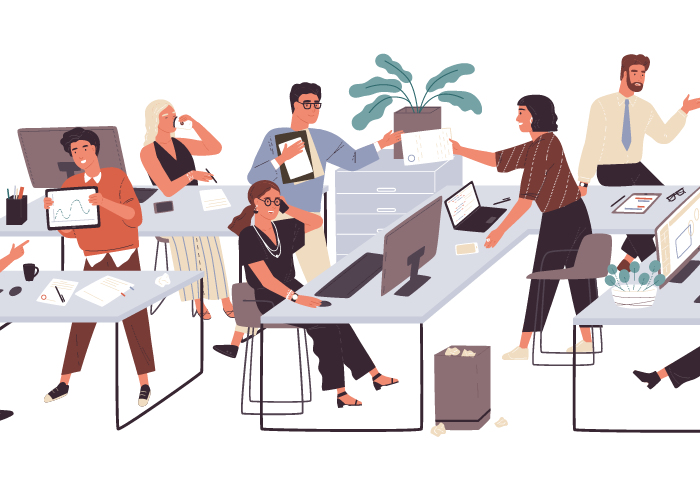The Role of Psychosocial Safety in the Workplace

This cannot be achieved without psychosocial safety: an area of organizational psychology that has found itself in the spotlight in recent years. As the focus on employee wellbeing and mental health continues to be renewed with each passing year and employee attitudes to employment evolve as they become more empowered, leaders need to focus on building psychosocial safety into the core of their organizations by fostering the right climate, mindsets, and behaviors within teams to ensure a fearless organization.
Connecting psychosocial safety to ISO 45001
You might be thinking, “What does psychosocial safety have to do with ISO standards?”Risks and opportunities for organizational improvement in any context have been proven to be effectively identified and managed by ISO standards, particularly in occupational health and safety (ISO 45001) and quality (ISO 9001). Indeed, elements of psychosocial safety have been in place within these standards for over five years, and although psychosocial safety is only now really hitting the “mainstream”, it’s important for organizational leaders to see how psychosocial safety considerations are written into various components of ISO 45001 to drive an environment and culture of workplace safety and wellness.
Clause 5.1, for example, places the onus on management to demonstrate leadership and commitment to the OH&S management system by, among other things, developing, leading, and promoting a culture that supports it, and protecting workers from reprisals when reporting incidents, hazards, and risks. The standard also deals with psychosocial risk and hazard identification via Clause 6.1, which requires organizations to implement proactive and ongoing processes for hazard identification by considering how work is organized, social factors, and organizational culture.
Applying ISO 45003 to your ISO 45001
How work is organized:The standardʼs focus here is on identifying roles and expectations across an organization, job control, job demands, workload, and pace of work. Hazards include role ambiguity, conflicting demands and deadlines, unrealistic expectations of worker competence, and unreasonable deadlines. Think back to your first day in your current job. What if every day was like that? Alternatively, how would the anxiety of wearing too many hats due to job role ambiguity affect your attentiveness and effectiveness in work?
Social factors:
The standard’s focus here is on personal relationships, leadership and management styles, workplace culture, communication, and even career development opportunities. Along with this should come support against violence, abuse, harassment, and bullying in the workplace, along with freedom from reprisal for raising concerns or making reports. It all comes down to managing interpersonal relationships across the organization through identification and creating policy around social influences. This might sound over the top, but the stakes are high in the modern-day workplace. You set the standards within the organization to establish values that ultimately influence its culture.
Work environment:
The standardʼs focus here is on hazardous tasks, workplace conditions (i.e., lighting, temperature, noise), equipment maintenance, adequacy of physical settings, and extreme conditions. For the most part, this is where traditional OSHA compliance programs and equipment standards offer the framework for action and prevention of the three categories of risks and opportunities. The standard recognizes that some jobs are naturally subject to extreme conditions, but these still need to be addressed. Examples include offshore work, electricity transmission, and meat processing. Strong workplace safety management systems ought to have these particular extremes planned for.
New realities facing leadership
Candidates and indeed employees who are dissatisfied with any of the above are more than willing to walk and go and work for competitors who have taken the time to adopt an approach to flexible working and can demonstrate their commitment to employee wellbeing through organizational culture.Organizational leaders should look to leverage the existing connectors within to ensure psychosocial safety. The pandemic has raised expectations for management engagement with the workforce, and leaders should decide how to use their communication channels for ongoing wellness risk management. Leaders also need to get the workforce and management aligned for diversity and inclusion, be prepared to participate in hazard identification, and create proactive solutions to psychosocial risks, such as safety committees and new diversity and inclusion policies that account for factors such as gender identity.
The transformative results of engagement, innovation, productivity, competition, quality, ownership, and pride have been seen to be a driving force behind organizational change for decades, without much of a downside effect, and establishing such a workplace culture for open communication is a new strategy for success. It comes down to the belief that nobody will be punished for speaking up with their ideas, questions, concerns, or mistakes, and that the wider team is safe for interpersonal risk taking—this is one of ISO 45003’s biggest benefits.
Learn more here: https://info.lrqa.com/psychosocial_safety_ISO45003
Topics:
Leadership & Careers
Related
Sponsored Content
About the Author

Bill Barnes
LRQA
Bill Barnes is an Integrated Senior Lead Assessor working with LRQA since 2005 involved in ISO 9001, 14001, 45001 and Responsible Care© assessments. Bill has over thirty-five years of manufacturing engineering, consulting, training and
assessment experience for quality, health & safety, environmental and security aspects in the service and manufacturing industries sectors working from on the floor liaison engineering to mid and senior management positions in industries including
aerospace, transportation, chemicals, pulp and paper, food and beverage. He is a licensed Professional Engineer, IRCA Principal Auditor and Exemplar Global Responsible Care Auditor.

